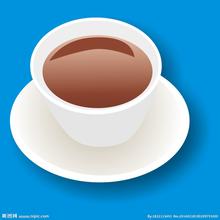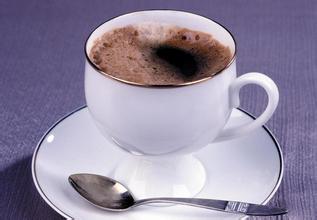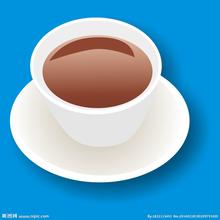The process of making coffee how to make iced coffee
Traditional matching:
Medium baking degree (City).
30% of Mocha, 30% of Colombia, 40% of Brazil.
Suitable for matching that likes sour taste:
Normal baking degree (Midium).
30% of Mocha, 40% of Colombia, 30% of Brazil.
Suitable for matching with strong taste:
Medium baking degree (City).
40% of Mocha, 20% of Colombia, 30% of Brazil, 10% of Guatemala.
It is suitable for matching with sweet taste in bitterness:
Degree of intense baking (French).
30% of Mocha, 30% of Colombia, 40% of El Salvador.
The pleasure of making coffee
Coffee gives off a strong aroma in the process of grinding and blending, which we often can't enjoy in the coffee shop. In fact, you can prepare a hand mill to grind the freshly roasted coffee beans into powder at any time, and then brew them to keep all the aromas of the coffee in the cup.
Manual dripping method:
Dripping is currently the most commonly used method of making fresh coffee. First put the filter paper in the filter and grind it into a medium fineness coffee powder. Generally, each cup of coffee needs about 10 grams of coffee and about 150 milliliters of water. Choose a small kettle with a thin mouth to boil water in order to control the speed and mode of water injection. The best water temperature for brewing coffee is about 93 degrees Celsius, so the water needs to be boiled for a while, then slowly inject a small amount of water into the filter, soak for half a minute to let the coffee fully expand; the second time must be from the center to the outside, then from the outside to the center of the spiral water injection, pay attention to control the flow speed, avoid water directly into the filter paper, take a break, and inject water again. If you make 5 cups of coffee, you need to inject water about 5 times.
Pressure infiltration and brewing method:
This method uses a piston coffee pot to make coffee, which is one of the easiest and most popular ways to make fresh coffee. Put the ground coarse-grained coffee powder into a warm coffee pot, pour in the boiling water and stir well. after soaking for four to five minutes, press the piston with a filter to the bottom of the pot to separate the coffee powder from the brewed coffee, then serve in a cup.
Drink a good feeling
Coffee should be drunk while it is hot, and the temperature at the entrance is about 61 degrees Celsius. With the decrease of temperature, the taste and aroma of coffee will be greatly reduced. For this reason, coffee cups are generally made into thick-walled straight cups to facilitate heat preservation, and boiled water warm cups are used to prepare coffee at the same time.
Caffeine should be tasted as carefully as wine, never in a hurry. Hold the ear of the coffee cup with the index finger and thumb of the right hand, hold the coffee plate in the left hand, or hold the cup under the nose to smell the original taste of the coffee, then take a sip to try the original taste, then add the right amount of sugar according to personal preference, and gently stir it with a small spoon, slowly add cream while the coffee swirls, and let the oil float on the coffee surface. On the one hand, it can keep warm, on the other hand, the heat of the coffee can also evaporate the milk flavor.
Foods suitable for coffee are sandwiches, pretzels, bread, pastries, ice cream, walnuts, chocolate, candy and fruit. If you are in a sandwich machine, put all kinds of materials for making sandwiches side by side on the table, let the guests choose the materials they like and put them in a piece of bread and bake them in the sandwich machine for a few minutes to make a delicious hot sandwich corner.
Iced coffee: put ice in the dripping pot and let the hot coffee drip directly on the ice. At this time, the coffee powder should be added properly.
Mexican iced coffee: first add sweetened iced coffee, then pour 15ml of coffee wine, 30ml of whipped cream, and finally filled with ice

Important Notice :
前街咖啡 FrontStreet Coffee has moved to new addredd:
FrontStreet Coffee Address: 315,Donghua East Road,GuangZhou
Tel:020 38364473
- Prev

What are the four main types of coffee trees?
Ethelsa species Ethelsa species is a variety discovered only in 1904, native to the Charlie River Valley in Africa, small fruit, high yield per plant, especially a drought-resistant variety. The product has strong flavor and slightly bitter taste. It is less cultivated in Liberia. Liberia is a large-grain species. It is native to Liberia in Africa and a few countries such as Malaysia. It's been cultivated longer
- Next

Roasting and storage of coffee beans how to use a manual coffee grinder
1. Raw beans: the raw coffee beans before stir-frying are only for the convenience of transshipment, without special packaging conditions, depending on the differences of each production area, out of economic and practical considerations, generally use 60 kg gunny bags for packaging, and then further processing after arriving at the destination. Of course, there will be some different packaging, such as Jamaica Blue Mountain is packed in 70kg wooden barrels. 2. Cooked beans:
Related
- Does Rose Summer choose Blue, Green or Red? Detailed explanation of Rose Summer Coffee plots and Classification in Panamanian Jade Manor
- What is the difference between the origin, producing area, processing plant, cooperative and manor of coffee beans?
- How fine does the espresso powder fit? how to grind the espresso?
- Sca coffee roasting degree color card coffee roasting degree 8 roasting color values what do you mean?
- The practice of lattes: how to make lattes at home
- Introduction to Indonesian Fine Coffee beans-- Java Coffee producing area of Indonesian Arabica Coffee
- How much will the flavor of light and medium roasted rose summer be expressed? What baking level is rose summer suitable for?
- Introduction to the characteristics of washing, sun-drying or wet-planing coffee commonly used in Mantenin, Indonesia
- Price characteristics of Arabica Coffee Bean Starbucks introduction to Manning Coffee Bean Taste producing area Variety Manor
- What is the authentic Yega flavor? What are the flavor characteristics of the really excellent Yejasuffi coffee beans?

